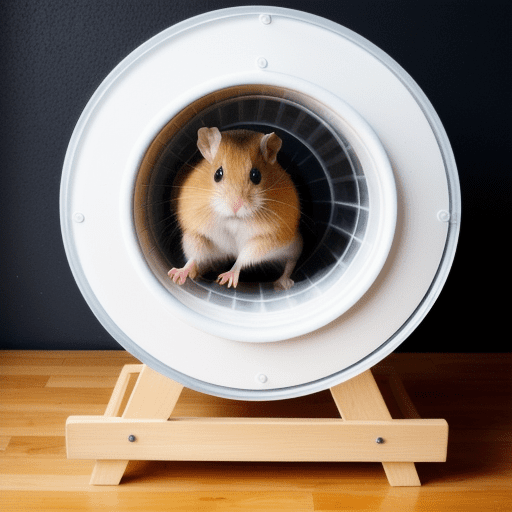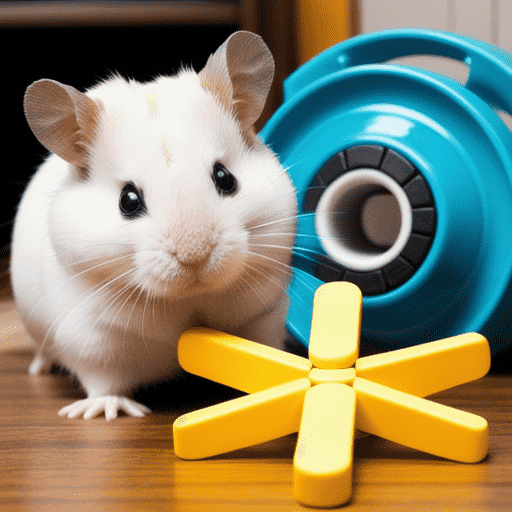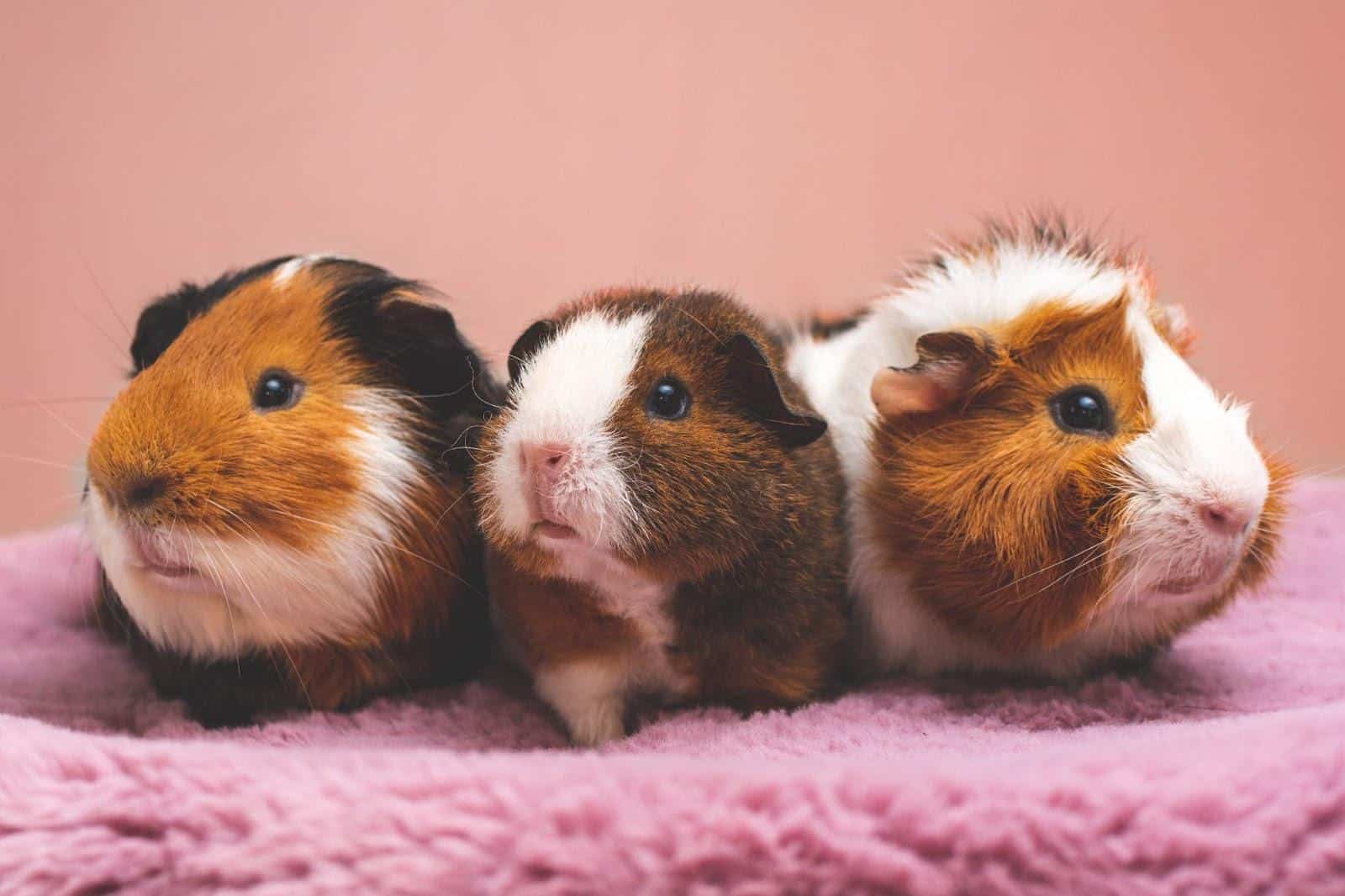Ever chuckled at fat hamster memes and thought, “Could my hamster ever get like that?” While these memes may be cute, obesity in hamsters is far from healthy.
In fact, obesity in hamsters is a prevalent problem that can cause severe health issues and may impact their playfulness and dramatically reduce their quality of life.
In this comprehensive guide, we’ll delve into the causes, risks, and solutions for obesity in hamsters.
So, buckle up, and let’s embark on this knowledge-packed journey together!
Table of Contents
Understanding the Causes of Obesity in Hamsters
Just like in humans, obesity is an issue that affects hamsters too. Some factors can make a hamster obese. It’s crucial to grasp these to understand how to keep your hamster healthy. Let’s dig into the common reasons for hamster obesity.
Overfeeding and Incorrect Diet
An overfed hamster is a classic recipe for fat hamsters. They’re little eating machines! Offering unlimited food, especially high-fat or sugary treats, leads to rapid weight gain.
Lack of Exercise
Hamsters, being active creatures, need plenty of exercise. A hamster living a sedentary lifestyle is prone to gaining excess weight. Lack of movement is a clear path to hamster obesity.
Genetic Predisposition
Certain hamster breeds might be genetically predisposed to obesity. It’s not the norm, but it’s possible. Knowing your hamster’s breed can help in anticipating and managing such situations.
Behavioral Factors and Stress
Stress or boredom often results in overeating in hamsters, contributing to weight gain. An unstimulating environment can lead to a depressed and, eventually, an obese hamster.
Recognizing the Risks and Health Consequences of Fat Hamster
The consequences of obesity in hamsters stretch beyond mere physical appearance. The health risks associated with an overweight hamster are quite severe and can potentially shorten their lifespan.
Increased Risk of Diabetes
Much like in humans, an overweight hamster is at an increased risk of developing diabetes. This condition needs constant management and can significantly affect your hamster’s life quality.
Cardiovascular Problems
Heart issues aren’t unusual in fat hamsters. Excess weight can put undue strain on your hamster’s heart, leading to heart disease and other cardiovascular problems.
Joint and Mobility Issues
Carrying around excess weight can lead to mobility issues and strain your hamster’s joints. This can cause pain, reduce their activity level, and further contribute to obesity.
Reduced Lifespan and Quality of Life
Ultimately, a hamster suffering from obesity can have a significantly reduced lifespan. Obesity can lead to several health issues that shorten their life and reduce their quality of life.
Prevention and Management Strategies for Fat Hamsters
Addressing hamster obesity calls for a comprehensive approach. By focusing on diet, exercise, and regular check-ups, you can help your fat hamsters maintain a healthy weight.
Appropriate Diet and Portion Control
Proper diet management is the cornerstone of preventing obesity in hamsters. This includes providing a balanced diet and monitoring portions to avoid overeating.
Providing a Balanced and Nutritious Hamster Food
Offering a balanced, nutritious diet to your hamster is a crucial part of their health. Always opt for high-quality hamster food and supplement with fresh fruits and vegetables.
Encouraging Physical Activity and Exercise
Physical activity is a significant element in managing your hamster’s weight. Encouraging regular exercise can help prevent obesity, and it doesn’t have to be complicated!
Here are some methods to keep your hamster moving.
Provide a Hamster Wheel

A hamster wheel is a must-have accessory for every hamster habitat. It allows your furry friend to exercise whenever they want, helping them burn off excess calories and stay fit. Ensure the wheel is solid-bottomed to prevent injuries.
Create an Exercise Area
Consider setting up an exercise area outside of the cage. This can be a hamster-proofed room where your pet can roam freely, explore, and burn energy. Always supervise these playtimes to ensure your hamster’s safety.
Rotate Toys and Accessories
Rotating toys and accessories in your hamster’s cage keeps their environment stimulating. New objects to explore and interact with will encourage your hamster to be more active, thereby reducing the risk of obesity.
Use Treat Balls or Puzzle Toys

Treat balls or puzzle toys that release food when manipulated are excellent tools for promoting exercise. These toys stimulate your hamster’s mind and encourage physical activity as they work to release the treats inside.
Environmental Enrichment
An enriching environment is a significant factor in preventing hamster obesity. A well-stimulated hamster is less likely to overeat and more likely to engage in physical activities. This involves providing a variety of toys, climbing structures, and hiding places in their habitat.
Materials for burrowing and nesting also contribute to a rich environment. Introduce new elements periodically and rotate existing ones to maintain novelty. Providing items to chew on, like untreated wood, can keep your hamster busy, contributing to mental stimulation.
Remember, an engaged hamster is a healthy, active hamster!
Monitoring and Regular Weighing
Keeping track of your hamster’s weight is also vital in the fight against obesity. Regular weigh-ins can help identify any sudden weight gains or losses, indicating potential health issues.
This can be as simple as using a small kitchen scale. Alongside weight, monitor their eating, drinking, and activity levels for any significant changes. Take note of any excessive lethargy or lack of interest in activities they previously enjoyed.
Being vigilant about these shifts helps you promptly adjust their diet or exercise plans and seek veterinary advice when needed.
Seeking Veterinary Guidance
Despite all efforts, if your hamster continues to struggle with weight, don’t hesitate to seek veterinary guidance. Professionals can provide expert advice tailored to your hamster’s specific needs and circumstances.
They can perform comprehensive health checks and prescribe specific diets or treatments if necessary. Regular check-ups can help prevent potential health issues related to obesity from escalating.
Your vet is your trusted partner in ensuring your hamster’s health and well-being, so keep them in the loop on your pet’s progress.
Behavioral Factors and Emotional Well-being
Looking beyond the physical, your hamster’s emotional well-being plays a crucial role in managing obesity. Stress and boredom can lead to overeating; hence, a mentally stimulating environment is important.
Identifying and Managing Stressors
Keep an eye on potential stressors that can affect your hamster’s behavior. Changes in their environment, abrupt noises, or introducing a new pet can cause stress, leading to unhealthy eating habits.
Identifying and managing these stressors are key to preventing obesity in your hamster.
Promoting a Safe and Stimulating Environment
A mentally stimulating environment is as essential as a physically active one. Include a variety of toys, tunnels, and hiding spots in your hamster’s habitat.
Frequent rotation of these elements will keep things fresh and interesting, reducing the chances of your hamster overeating out of boredom.
Encouraging Natural Behaviors and Foraging
Encourage your hamster’s natural behaviors, such as foraging, by hiding food around their cage. This not only mentally stimulates your hamster, but it also provides physical exercise, both of which are excellent strategies to counter obesity.
Creating a Healthy and Balanced Lifestyle for Hamsters
Establishing a healthy lifestyle for your hamster is paramount in combating obesity. This involves a mix of consistent practices, including gradual weight reduction, progress tracking, and long-term weight management.
Gradual Weight Reduction Methods
Tackling obesity doesn’t mean crash diets for your hamster! Instead, opt for gradual weight reduction. This involves introducing low-fat food options and increasing your pet’s activity levels.
Slow and steady wins the race, leading to sustainable weight loss and healthier hamsters.
Tracking Progress and Making Adjustments
Monitoring your hamster’s weight and behavior is crucial in managing obesity. Regular weigh-ins can help you detect any weight gain early.
Also, observing their eating and activity patterns allows you to make necessary adjustments, ensuring your pet’s diet and exercise regime remain optimal.
Long-term Weight Management and Maintenance
Obesity management is a long-term commitment. It’s about balancing a nutritious diet, physical activity, and regular health checks. Once your hamster attains a healthy weight, it’s vital to maintain this lifestyle, preventing relapses into obesity and ensuring their continued well-being.
Conclusion
Obesity in hamsters is a serious concern, but it can be managed effectively with the right knowledge and tools. By understanding the causes and risks and implementing the right preventive and management strategies, we can ensure our furry friends lead a happy, healthy life.
Remember, the healthiest hamster isn’t necessarily the chubbiest one. Rather, it’s the one that leads a balanced, active life. And that’s something no fat hamster meme can compete with!
FAQs
How can I tell if my hamster is obese?
An obese hamster typically has a visible layer of fat, making it difficult to feel its ribs and spine. Their belly may drag on the ground, and they may display reduced activity levels or difficulty moving.
What causes obesity in hamsters?
A combination of factors, such as overfeeding, a diet high in fats and sugars, lack of physical activity, genetic predisposition, and certain behavioral factors, including stress, can cause obesity in hamsters.
How can I help my obese hamster lose weight?
The best way to help your hamster lose weight is through a combination of a balanced diet, portion control, increased physical activity, environmental enrichment, regular weight monitoring, and seeking veterinary guidance when needed.
Alina Hartley is a small-town girl with a ginormous love of bearded dragons. It all started with Winchester, a baby bearded who was abandoned at the shelter by his former owners because of a birth defect that caused one front leg to be shorter than the other. Alina originally went to the shelter looking for a guinea pig, but one look at Winchester and it was love at first sight. From that day on, Alina has dedicated her life to learning everything she can about bearded dragons. She loves helping new beardie parents start their incredible journey with these magnificent reptiles.
Follow her on:
LINKEDIN
TWITTER.
Read her latest articles HERE
Learn more about her HERE.

